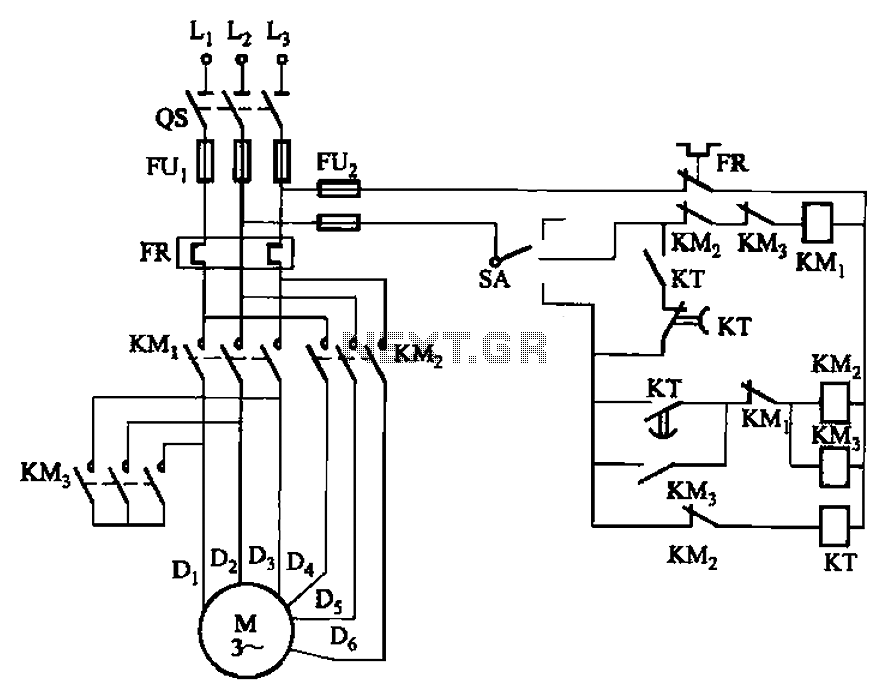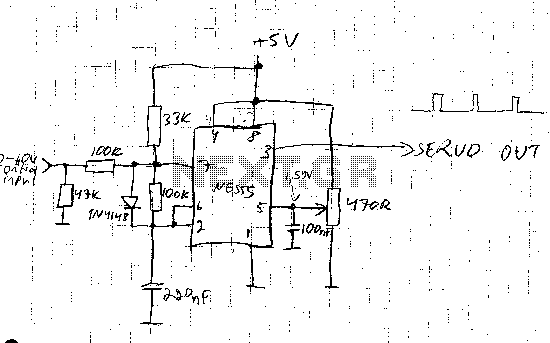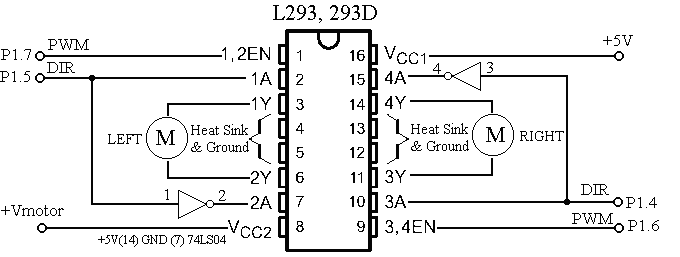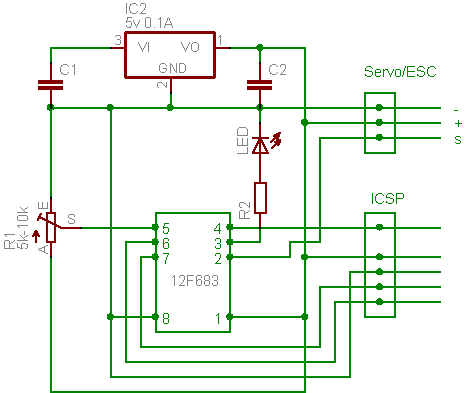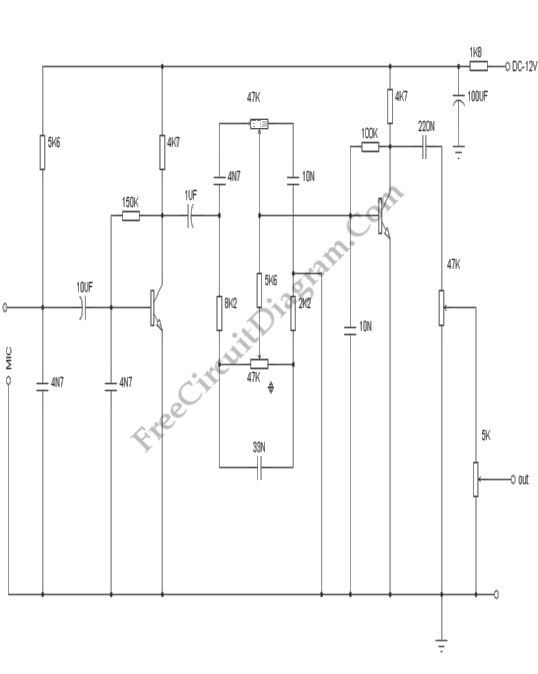
PT2102 dimming control ASIC
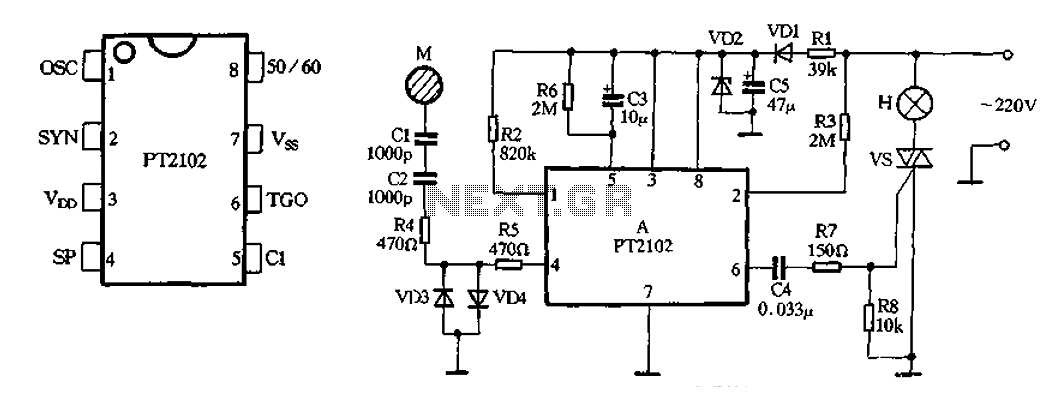
A 220V AC input is stepped down using a resistor (Rl) and then rectified by a diode (VDI), followed by filtering through a capacitor (C5) to produce an output voltage of approximately 9V DC for a manifold power supply. Resistor R3 is used for synchronizing the input AC signal to the manifold. Additionally, diodes VD3 and VD4 are employed to protect against excessively high input signals that could damage the manifold. When a hand touches any of the electrode sheets (M), the brightness of a connected light changes, cycling through states of low brightness and off.
The circuit operates by first taking the high-voltage AC input of 220V and reducing it to a lower voltage suitable for the manifold system. The resistor Rl functions as a buck converter, dissipating excess voltage and limiting current. Following this, diode VDI rectifies the AC voltage into a pulsating DC voltage. Capacitor C5 smooths out this pulsating signal, resulting in a more stable 9V DC output, which is necessary for consistent operation of the manifold.
Resistor R3 plays a crucial role in ensuring that the AC signal entering the manifold is synchronized, which is essential for the proper functioning of the system. The inclusion of diodes VD3 and VD4 provides an additional layer of protection, preventing high voltage spikes that could potentially damage the sensitive components of the manifold.
The interaction with the electrode sheets (M) introduces a user interface aspect to the circuit. When a user touches one of these electrodes, it triggers a change in the brightness of a connected light source. This feature allows for a visual indication of the system's state, cycling through various brightness levels, including a low light state and an off state. This dynamic response not only enhances user engagement but also provides a simple feedback mechanism regarding the operation of the manifold system. The cycling behavior of the light can be utilized for signaling or alerting the user to specific conditions within the circuit.220V AC via a resistor Rl buck, VDI rectifier, VD2 and c5 filtered output voltage of approximately 9V DC voltage supply manifold electricity. R3 for the manifold input AC synch ronous signal, VD3 and VD4 possible to prevent a touch too high input signal damaged manifold. When the hand touch every once electrode sheet M, the brightness of the light to change a block, repeatedly touch the lamp brightness Patch Low Light a light one light one off a weak light. cycling.
The circuit operates by first taking the high-voltage AC input of 220V and reducing it to a lower voltage suitable for the manifold system. The resistor Rl functions as a buck converter, dissipating excess voltage and limiting current. Following this, diode VDI rectifies the AC voltage into a pulsating DC voltage. Capacitor C5 smooths out this pulsating signal, resulting in a more stable 9V DC output, which is necessary for consistent operation of the manifold.
Resistor R3 plays a crucial role in ensuring that the AC signal entering the manifold is synchronized, which is essential for the proper functioning of the system. The inclusion of diodes VD3 and VD4 provides an additional layer of protection, preventing high voltage spikes that could potentially damage the sensitive components of the manifold.
The interaction with the electrode sheets (M) introduces a user interface aspect to the circuit. When a user touches one of these electrodes, it triggers a change in the brightness of a connected light source. This feature allows for a visual indication of the system's state, cycling through various brightness levels, including a low light state and an off state. This dynamic response not only enhances user engagement but also provides a simple feedback mechanism regarding the operation of the manifold system. The cycling behavior of the light can be utilized for signaling or alerting the user to specific conditions within the circuit.220V AC via a resistor Rl buck, VDI rectifier, VD2 and c5 filtered output voltage of approximately 9V DC voltage supply manifold electricity. R3 for the manifold input AC synch ronous signal, VD3 and VD4 possible to prevent a touch too high input signal damaged manifold. When the hand touch every once electrode sheet M, the brightness of the light to change a block, repeatedly touch the lamp brightness Patch Low Light a light one light one off a weak light. cycling.

